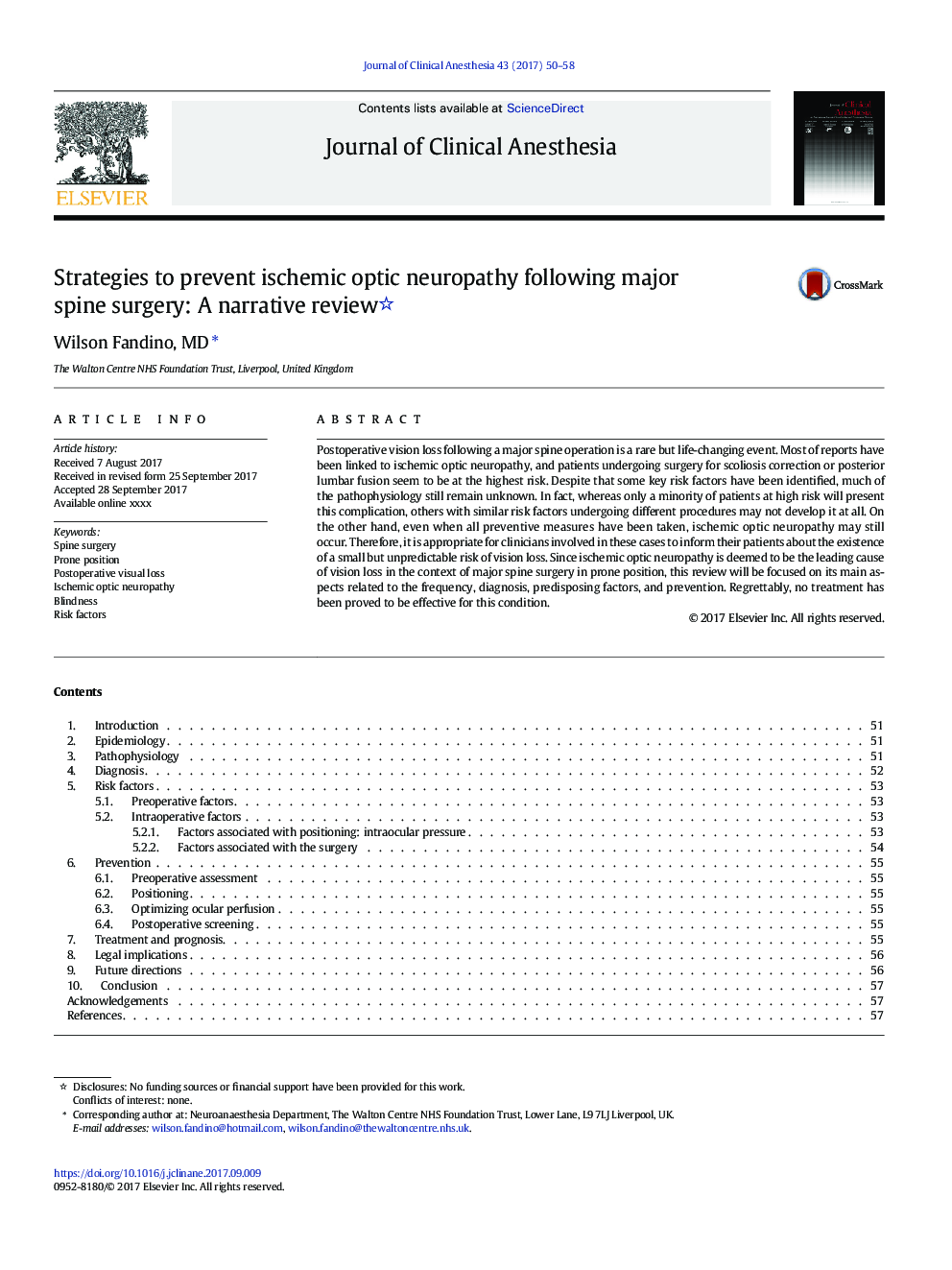| Article ID | Journal | Published Year | Pages | File Type |
|---|---|---|---|---|
| 5582830 | Journal of Clinical Anesthesia | 2017 | 9 Pages |
Abstract
Postoperative vision loss following a major spine operation is a rare but life-changing event. Most of reports have been linked to ischemic optic neuropathy, and patients undergoing surgery for scoliosis correction or posterior lumbar fusion seem to be at the highest risk. Despite that some key risk factors have been identified, much of the pathophysiology still remain unknown. In fact, whereas only a minority of patients at high risk will present this complication, others with similar risk factors undergoing different procedures may not develop it at all. On the other hand, even when all preventive measures have been taken, ischemic optic neuropathy may still occur. Therefore, it is appropriate for clinicians involved in these cases to inform their patients about the existence of a small but unpredictable risk of vision loss. Since ischemic optic neuropathy is deemed to be the leading cause of vision loss in the context of major spine surgery in prone position, this review will be focused on its main aspects related to the frequency, diagnosis, predisposing factors, and prevention. Regrettably, no treatment has been proved to be effective for this condition.
Keywords
Related Topics
Health Sciences
Medicine and Dentistry
Anesthesiology and Pain Medicine
Authors
Wilson MD,
